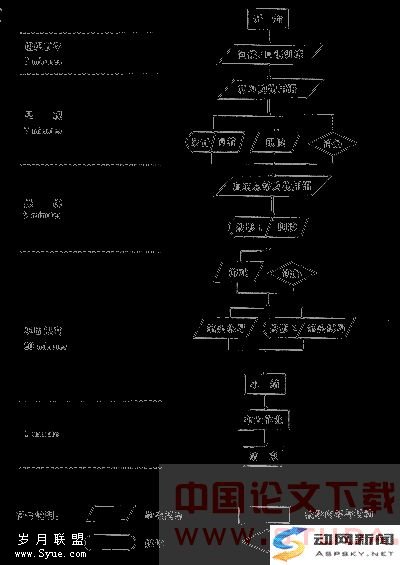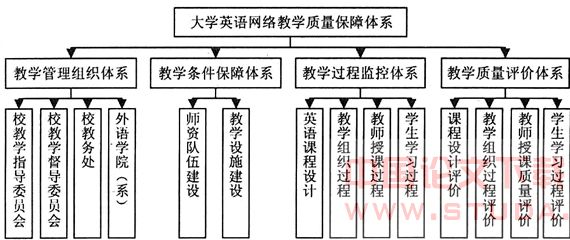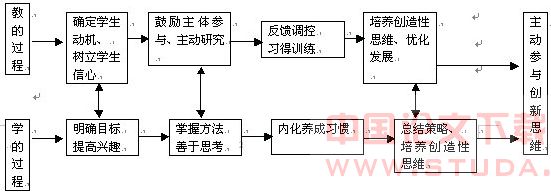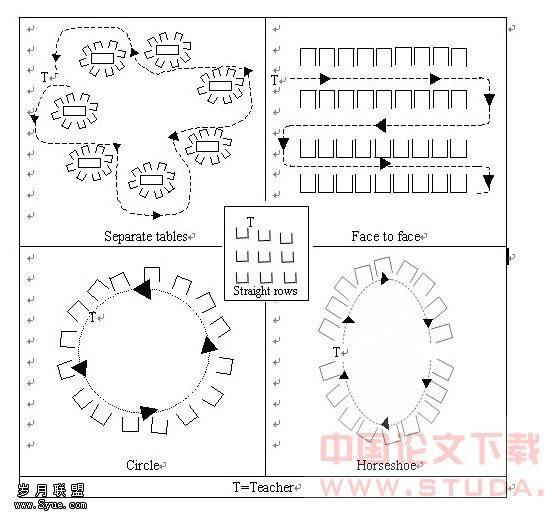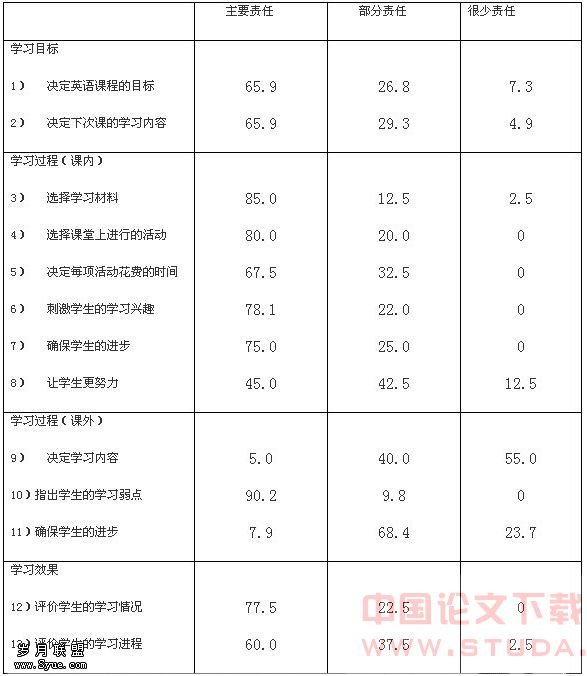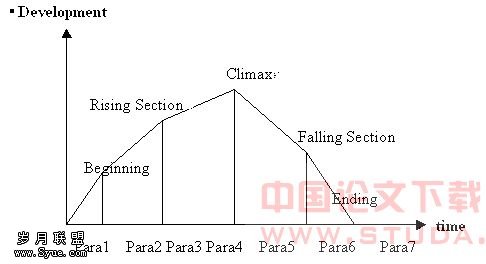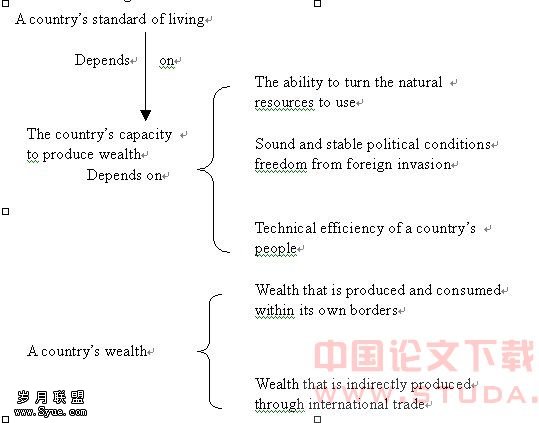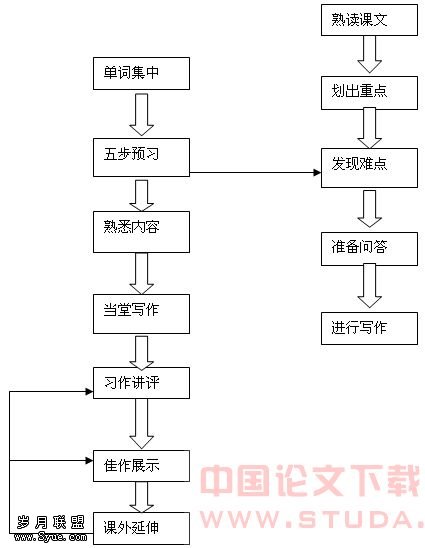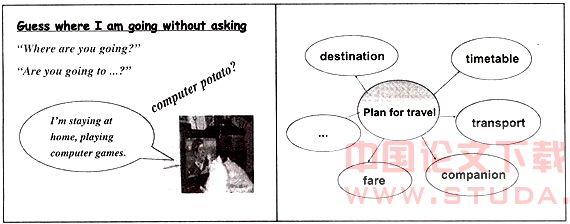高中英语阅读教学教师提问技能浅析
[Abstract] Reading is an essential ability to learn a language. It is the foundation of mastering a language as well as a main tool to obtain information. In regard to English teaching, high school is a start to train students’ reading skills. The New Curriculum Standard emphasizes the importance of Reading in English teaching. So, how to teach Reading is of great importance. In the promoted student-centered reading class, the teacher should seek a way to train students how to read and stimulate them to participate in reading so as to guide them to an active and effective reading. To reach this target, teachers’ questioning is one of the important ways in teaching of Reading. It is a major form of interaction between language teacher and the learner. In English Reading class, teacher’s question is to a great extent determines the qualities of the classroom teaching and influence the teaching results. However, the teachers’ questioning strategies in reading class at present still have problems, many of which are not effective. The thesis summarizes the types of questions and questioning strategies through analyzing problems of questioning in today’s Senior English reading class. Suggestions are given on how to apply questioning effectively in Senior English reading class.
[Key Words] effective; response; feedback; questioning; wait-time; reading ability; questioning strategies;
[中文摘要] 阅读是学一门语言必备的技能,它是掌握语言的基础,也是获取信息的主要手段。高中新课程标准也都强调英语阅读能力培养的重要性。因此,如何上好阅读课以及培养学生的阅读能力就成了摆在教师面前的重要问题。在提倡以学生为中心的课堂的情况下,教师必须探求如何在阅读课上引导学生进行阅读并促使他们积极地参与到教学活动中来。而教师的提问策略作为英语阅读教学的主要方法,对引导学生进行如何有效阅读起着至关重要的作用,它很大程度上决定着教学质量的好坏。然而,现在英语课堂上的提问策略存在种种问题,很多问题的有效性不高。本文通过分析目前高中英语阅读教学中提问策略所存在的问题,分析提问的类型以及提问技巧策略,并对如何在高中英语课上有效应用提问技能提出了自己的看法。
[关键词] 有效性;回答;反馈;提问;等待时间;阅读能力;提问策略;
1. Introduction
Reading is one of the four essential skills in English language learning. As the most important receptive skill in foreign language learning, reading is placed at key position in the New English Curriculum Standard. However, English reading comprehension has been a headache for most of students, who don’t really know how to read. Thus how to teach reading widely and effectively has become a problem of utmost importance.
So far, most learners of English as a foreign language in China learn the target language from their teachers in the classroom. Therefore, being one of the most commonly used teaching strategies in EFL (English as a Foreign Language) classroom, questioning undoubtedly plays an important role in carrying out effective classroom activities. Just as Geoff Thompson in the Training Teachers to Ask Questions points out one of the main forms of interaction between the language teacher and the learner is through questions. Questioning should be employed both in passing on knowledge and in developing learners’ reading abilities in reading class. By questioning, teachers can know about at what level the students’ proficiency and, what’s more important, the appropriate questions can elicit students to analyze and think about the key points of the text, which enhance students’ practical language abilities. In fact, asking questions effectively is not as effective as it seems. Teachers’ questioning is not a simple teaching process. It requires the teachers’ efforts of further study and real practice.
2. Analysis of questioning in reading class
2.1 Definition of teachers’ questioning
Questioning is an effective teaching technique in reading class. There is a long history of studying questions in general education. More than 2000 years ago, questioning had attracted the educators’ attention. Confucian in China promoted eliciting teaching and Socrates advocated a talk-and-answer method, which are all meaningful in education today. In 1912, American scholar Steven was the first to introduce classical research in classroom questioning. He suggested that classroom teaching is actually a circle of ask-and-answer activity. Researchers show that during a career in the classroom, a typical teacher will ask about one and a half million questions.
So what’s teachers’ questioning? “In classroom settings, teachers’ questions are defined as instructional cues and stimuli that convey to students the content elements to be learned and directions for what they are to do and how they are to do it. Questions enable teachers to engage students in higher levels of cognition or, more specifically, critical thinking. ”[1] Through questioning, teachers enable students to engage in the class, getting specific information, understanding the purposes of the text and savoring the beauty of the text, which lead to reach goals of teaching in reading. At the same time, in the ask-and-answer process, communication between teachers and students is frequent, which undoubtedly give students more chances to use target language.
2.2 The Importance of questioning in reading class
“According to Larry A. Harris& Carl B. Smith, reading is the reader’s interaction with a printed message in English as a second language across a range of active think operations for some purposes (such as to find information, to compare or to enjoy) in or out of classes, guided by a teacher.” [2]The interaction requires both the extraction of information and an active response to ideas. Therefore, reading is not a passive but an active and constructive process. However, in traditional teacher-centered classroom, the teacher is regarded as an authority, who dominates the whole class. This teacher-initiative procedure treats students as passive readers, which spoils students’ interests in reading and its effectiveness. In recent few years, more and more emphasis has been put on creating student-centered classroom, where the teacher is just an organizer or a guide rather than a dominator. As instruction becomes more learner-centered, teachers’ are increasingly being asked to guide learning rather than simply deliver information. Questioning is the most important tool teachers have for meeting this goal.
In the most common type of classroom questioning known as ‘IRF’(Initiation-Response-Feedback) pattern, appropriate questioning can fulfill a number of different functions. We use questioning in reading teaching to stimulate thinking, assess student progress, check on teacher clarity, attract students’ attention, maintain classroom control, emphasize key points and help students to find out their drawbacks and so on. Questions are the sparks that ignites students’ thought process. Thus teachers must know and use good questioning strategies to develop students reading abilities.
2.3Questioning in the process of reading class
There are three steps of teaching of reading: pre-reading, while-reading, post-reading. Therefore, questioning are various in every step
(ⅰ) In pre-reading activity, there are mostly lead-in questions. Teachers ask some questions about the reading background and apply many eliciting questions to stimulate students to think, memorize and predict. These questions promote students interests to read the text, improve students’ reading efficiency and get more information.
(ⅱ) While-reading activity is the most important activity in reading. Display questions are presented in this step, which is asked according to the content, main ideas and language points in this text. Through some detail questions about the text, students find out the key words from the text to answer the questions. It not only makeS students understand the text fully, but also provideS chances to use the target language.
(ⅲ) In post-reading activity, referential questions are utilized. After reading, the teacher makes a summary through asking questions about the subject, writing style, and rhetorical technique. It encourages students to participate.
2.4 Problems of teachers’ questioning
Questioning is one of the most important ways in the teaching of reading. But in reality, questioning are not as effective as they are expected. High school teachers are not fully aware of the effects of teachers’ questioning on students’ understanding of the text. They pay little attention to the strategies of questioning in the reading class. As a result, the teachers’ questioning is only a superficial form of classroom activity, lacking the practical value. It can’t stimulate students to join in, nor can it develop their reading ability. There are still many problems:
2.4.1 Lack of clear aims in teachers’ questioning
In high school English teaching, teachers are rarely aware of their questioning which affects students of different levels. Many teachers often ask questions just to know which student has memorized a particular language point, which contributes little to understand the text and students are likely to feel bored and reluctant to participate. What’s more, if the teachers’ aim of asking questions is only to ask students to answer “Yes” or “No”, the classroom atmosphere will be boring and can’t attract students. Such questions should be avoided in order to have an effective teaching.
2.4.2 Concentration of lower levels of questions
Effective questioning sequences should include a mixture of both lower level questions and higher level questions and vary with the objectives of the lesson. Research on teachers’ questioning revealed that most questions require students to memorize the key points in the text and high level questions like evaluation questions are few. Low level questions like “ who is the man?” “When and where was he born?” can be found from the texts and students just need to read out the answer without any thought. Therefore, it can not develop students’ reading ability. However, high school teachers ask too many factual, closed and display questions, and these kinds of questions could not promote students’ interest in reading.
2.4.3 Inadequate wait-time
Wait-time is think-time. Proper wait-time gives students time to think, but most teachers tend not to wait long enough between questions or before answering their own questions. It is not good for calling on students to participate in the reading class, especially to the students who are not confident in speaking in public. On the other hand, too much wait-time can also be detrimental to students responses to teachers’ questioning. Because when no one seems to be able to answer a question, more wait-time will not necessarily solve the problem. The amount of wait-time depends upon the level of questions the teacher asks and students’ proficiency levels.
2.4.4 Improper feedback and assessment
Refer to teachers’ questioning, their feedback and assessment plays an important role. It helps learners elaborate on their existing understanding. And feedback is also important for motivation because it provides students with information about their increasing competence and helps satisfy their intrinsic need to understand how they’re progressing.
Many high school English teachers have problems with handling students’ response. Some teachers provide no feedback and assessment to students’ answers, taking them as nature in classroom activities. Some teachers give casual or inadequate assessment or feedback to the answers of students, simply offers “Yes” or “No” which lower students’ enthusiasm. Others give negative feedback to students who give wrong answers. This will be discouraged to students. So teachers should obtain some skills in handling right respond in an encouraging way.
3.Classification of teachers’ questioning
To be an effective teacher, one must be an effective questioner. Skilled teachers use questions to set the stage for discussion and evoke higher thought process. The first step in effective questioning is to know the classification of questioning. There are many classifications of questioning. Learning the different kinds of questions is a crucial step in being able to use all types of questions effectively.
3.1Six cognitive levels of Bloom’s Taxonomy
Bloom’s taxonomy is the best-known system for classifying classroom questions. There are six levels of Bloom’s taxonomy and questions at each level require the students a kind of thinking process. Teachers should formulate questions on each of these six levels to encourage students to engage in cognitive processes. The six levels are: knowledge questions, comprehension questions, application question, analysis questions, synthesis questions, evaluation question.
The taxonomy shows the lower to higher levels of students’ thinking skills. Usually a teacher would vary the level of questions even within a single class period. A teacher may ask a question at the application level; if the students don’t respond correctly. Teachers might move to questions at a lower level of the taxonomy to check whether students have understood the material. If the students still can’t give correct response, teachers might have to temporarily change the teaching strategy.
Table3.1 Six cognitive levels of Bloom’s Taxonomy[3]
Question Level InstructionalProcess ExampleQuestions
Lower LevelThinking Knowledge Recall, Recite What (where) are the thirteen colonies?
Comprehension Describe, Summarize What is the main ides? How is the major character portrayed?
Application SolveShow What is the latitude of NY? Joe has 58 cents, how many 9-cent stamps can he buy?
HigherLevelThinking Analysis InferCompare What does this paragraph tell us about the author’s life?
Synthesis CreatePredict What is a good title for this painting?How can we help the homeless?
Evaluation JudgeChoose Do you believe in capital punishment? Which soft drink is best?
3.2 Types of teachers’ questioning in the practical study
To find out the effective questioning, the author observed two teachers during one-month educational practice in Lianjiang No.7 Middle School. One of the teachers observed has taught for 6 years. The other is just a novice who teaches for just one year. The textbook they used was Senior English For China, Book 4B, published by People’s Education Press. Each class has 58 students. The two teachers have the same pace of teaching. The units observed and compared are reading part of Unit 15, Unit16, and Unit 17 from March 14th to April 14th. One reading part is planed to be taught in two periods.
Studies of questioning have proposed various categories of questions. So the author’s observation mainly focus on the form of questioning, the content of questioning and the purpose of questioning, in order to study the questioning types teachers used and their teaching results.
3.2.1Questions based on form
3.2.1.1 Categories
“Questions can be classified according to their grammatical forms. It is sometimes suggested that each form should be used in reading lessons, as each is progressively more different to handle. However, it is often the grammatical form of the questioning that makes a question difficult for students.”[4] There are five groups of questions, of which is denoted by specific characteristics:
(ⅰ) Yes/No questions: Students did not need to answer the questions with a sentence. They can answer the question with Yes/No questions. For example: Should wheat be planted close together or with space?
(ⅱ) Alternative questions: Yes/No questions connected by “or”, however, these questions cannot be answered with yes or no. For example: Do people express their thought and opinions by words or gestures?
(ⅲ) Wh-questions: They are the questions which begin with who, what, when, where, how, why, etc. For example: What should we do if we want to reach the best harvest?
(ⅳ) Elicitation questions: They are questions which teachers ask students to complete by giving the first part of a sentence. For example: The title “Disabled? Not me!” tell us about~~~ (a girl who is disabled.)
(ⅴ) Translation questions: Questions teachers ask students to translate from English to Chinese or Chinese to English.
3.2.1.2 The data and data analysis
Table3.2
Teachers Total number of questions Yes/No questions AlternativeQuestions Wh-questions ElicitationQuestions TranslationQuestions
T1 45 7 2 33 2 1
T2 46 10 5 25 4 2
(T1---the experienced, T2--- the novice)
Obviously the total number of questions each teacher asked is almost the same and the number of wh-question is much more than other types of questions. T1 and T2 both used translation questions the fewest. If we develop further we notice that there are great differences of teachers’ questioning guiding students to think and answer questions.
(ⅰ) Wh-questions usually need the students to think over and Wh-questions are used to ask something about the context. T1 was good at forming a chain of questions to create an information gap, for example:
T1: What am I doing? (T1 makes some gestures before the students trying to express something nonverbally)
Ss: Some gestures
T1: Who use these gestures?
Ss: The dumb.
T1: Yes, clever. Which new word can you give me to describe it from this unit?
Ss: Disability.
T1...
As a result of the question chain, students participate in the class, which involve their interests in the reading part.
T2 asked students one question before repeating his answer and give evaluation. Then he turned to ask some repeated questions and didn’t lead to ask questions needing further thoughts. For example:
T2: Who can tell me the story? (30 seconds)
S1:(Silent)
T2: Ok, can you tell me the story? (Turn to another student)
S2:(Silent)
T2: And what about you? Can you tell me? (Turn to the third one)
S3:(Silent)
(ⅱ) The way of leading students to answer. When students give no response to questions, T1 would reiterate the questions or even modify his sentence from the text. So the students can read it out from the text without second thought.
It is widely believed that Wh-questions can be introduced as the most useful means to encourage more varied and complex language. Yes/No questions are generally easier for learners to answer. The teachers can direct those questions at weaker learners, or use Yes/No questions to check basic understanding of a text or situation before resorting to Wh-questions to elicit more detailed information. Furthermore, teachers may try to utilize different forms of questions to create more active atmosphere.
3.2.2.1 Categories
There are three types of questioning in terms of content as follows:
(ⅰ) Instruction questions: It refers to questions that are related to the classroom procedures and classroom management, which are to implement teaching planning to do classroom activities and check the students’ studying state in order to smooth teaching steps. For example: May I have your name please? (Before class) Is that clear? Any volunteer? (during the class) Any questions about the text? (the end of the class)
(ⅱ) Text questions: questions consist of the information in the situation on which the teaching is based.
(ⅲ)Real questions: questions related to the students’ personal experiences and require the students’ answering according to their own situation.
3.2.2.1The data and data analysis
Table3.3
Teachers Total number of questions Instruction questions Text questions Real questions
T1 45 7 31 7
T2 46 13 29 4
From the table 3.3, the teachers ask more questions about the text questions than the instruction questions and real questions. However, there are also differences between the two teachers:
(ⅰ)Instruction questions are used more by T2 than by T1. Instruction question is to ensure the procedure of teaching. But this kind of lower question isn’t good for the effectiveness of questioning if used too much. Therefore, T1 avoid utilizing too much.
(ⅱ)Although the text questions the two teachers used were nearly the same, T1 ask text questions from many aspects, which leave students room for thinking and classroom atmosphere is active, everyone was willing to participate. T2 ask just one type of questions and didn’t ask from many aspects. If there was various of questioning and from many aspects, it may attract students’ attention.
(ⅲ)They both apply real questions, but T1 used more. Real questions were familiar to the students. It can help to make an active classroom.
Traditionally, questioning in the classroom has focus on the information provide to students by the textbooks. In the new environment of learning English, there has been increasing recognition that it is worth approaching the context with a wider range of question types, encouraging the students to place what they are reading in the context of their own existing knowledge and opinions.
3.2.3Questions based on purpose
3.2.3.1 Categories
Questions serve a number of purposes, most notably (a) help to elicit to memorize particular structures and vocabulary; (b) enable teachers to check students’ understanding;(c) encourage students’ involvement in learning;(d) stimulate thinking;(e) help weaker students to participate. Some researchers suggested a way of categorizing the purposes of questioning: display questions and referential questions.
(ⅰ)Display questions refer to those questions for which the questioner known the answer beforehand. Such questions are usually asked for comprehension check, confirmation check or clarification requests.
(ⅱ)Referential questions are those questions for which the answer is not already known the teacher. Such questions require the students to fully understand the text before giving the answers.
3.2.3.2 The data and data analysis
Table3.4
Teachers Total number of questions Display questions Referential questions
T1 45 31 14
T2 46 40 6
Clearly, the table 3.4 shows that there is a preference for display questions over referential questions and referential questions by T1 are more than by T2.
Through observation, it was found that display questions outnumbered referential ones, but further observation shows that referential questions became more effectively. It seems that the use of display questions can encourage language learners to get interested. Referential questions, typical of high proficiency language classroom, and requiring long and syntactically complex answers contain important points by giving opinions, etc. So, it is wrong to think that referential questions are more useful or display questions useless. Each content requires an appropriate strategy.
All these types of questions have their place in reading class; the teachers should apply the types of questions according to the proficiency level of the students and the content of the text.
4.Application of teachers’ questioning
4.1 Questioning strategies
Questioning strategy refers to the strategy which teachers adopt in carrying out effective classroom questioning. They are of great significance for teachers in conducting second language teaching in class, because teacher’s being aware of his or her teaching process can make more effective questions and stimulate the students’ desire to learn English. So the strategies applied in the classroom questioning is important. The teacher can use the following questioning strategies------promoting, probing, repeating and rephrasing.
4.1.1 Promoting
“It is a technique in which a teacher asks questions or makes a statement that elicit a student response after the student has failed to answer a previous question or has given an incorrect or incomplete answer”[5] We can use promoting questions when a student provides an incorrect response or no response, instead of telling him he is wrong or calling on another student. However, “Promoting isn’t always appropriate. For instance, if a teacher asks a simple question that calls for remembering factual knowledge, such as ‘what is the first amendment to the Constitution?’ and the students is unable to answer, promoting has little usefulness; students either know the fact or they don’t. Promoting is more effective for conceptual, procedural, and metacognitive knowledge, and cognitive processes beyond remembering. ”[6] For example: suppose a teacher is asking a student to let him answering with the right answer “The girl is athletic.” But the student couldn’t give the expected answer. The teacher can promote as follows:
T: Identify an adjective in the sentences.
S: (no response)
T: What do we know about the girl?
S: She is athletic.
4.1.2 Probing
“Probing questions are questions that try to expand an initial student response. While promoting questions are concerned within influencing numbers of student responses, probing questions are concerned the quality of student responses. When using probing questions, the teacher intends to expand or extend ideas or to obtain new ideas from students. The teacher can probe in a variety of ways. Probing can be directed to the student who initiated the exchange. It can be directed to different students, or directed to the entire class.”[7] The goal of the questions is to deepen the student’s understanding of the content. For example, a teacher asks the students “Can anyone add to what was just said?” “Does anyone have a different idea?” and so on.
4.1.3 Repeating
When a teacher get an answer from a student, it is often good to repeat back to the whole class as many students will not have heard it clearly. Repeating serves two purposes: it insures that the whole class hears the answer and lets the teacher check students’ understanding of his or her question. This process also gives the other students time to think about the question and possible answers to it.
4.1.4 Rephrasing
Rephrasing is used when a student provides an incorrect response or no response. Instead of telling the student he is incorrect or calling upon another student, teacher may try to reword the question to make it clear and easier to understand (because the question may have been poorly phrased) and provide some information to help students come up with the answer. It is very necessary to rephrase teacher’s language used in an EFL reading class because skillful employment of teachers’ questions can make teachers easy to be understood, stimulate and facilitate students’ response. “Clarity in rephrasing questions is critical for effective questioning. The phrasing of the question affects the quality of student responses. The good wording of questions should be modified to the language ability of the class.”[8] For example: “Please tell me the main idea of the passage!” is better than “Put out your statement of the generalization of the passage!”
4.2 How to apply effective teachers’ questioning strategies
Questions can be used to check for understanding, stimulating curiosity and critical thinking in reading class. Effective questions can transform a classroom to an active student-centered classroom. So the strategies applied in the classroom is important. Therefore, it is necessary to elaborate and select questioning strategies. Questions can become effective teaching strategies when employed thoughtfully and less than effective when poorly employed.
Questioning usually follows the IRP pattern (Initiation-Respond-Feedback) so the teachers need to know how to design question, how to stimulate students to answer and how to feedback receptively.
4.2.1 How to design effective questions
In today’s student-centered classroom, students should be encouraged more involved in the classroom activities instead of passively sitting and ing to the teacher. So one of the most important principles of question designing is to design questions that encourage students’ participation. Good questions are questions that should improve students’ responses and learning abilities. These kinds of questions can expand students’ knowledge and encourage them to think creatively. There are several methods teachers can follow to improve the quality of their questions.
(ⅰ)Designing questions on the goals and purposes of the lesson. Teachers ask questions with several goals and aims: keep students actively involved in lessons, promote interest, check the students’ understanding and so on. The goals or purposes help to determine what levels of questions being asked. Teachers should ensure that questions are relevant to instructional objectives. Students learn a great deal from questions that are relevant to subject matter to be learned.
(ⅱ)Employing a variety of questioning strategies in carrying out classroom questioning. It is not effective to use single pattern to accomplish all classroom-teaching tasks. “ Use promoting, probing, rephrasing and repeating in proper time to extend, amplify or clarify the students’ answers. This helps students use their thinking skills. Use these techniques throughout the questioning process to ensure active participation by all students”[9]
(ⅲ)Asking questioning related to students’ personal experiences. Every student is familiar with his environment. When talking about their own experiences, they have much to say. So the teachers can combine the context with the students’ real lives, which is a good method.
(ⅳ) Questions should be phrased clearly and specifically. Vague questions should be avoided. Since the questions make students reluctant to respond, the teacher may use a much simpler grammatical structure to repeat the original questions to help students to understand it.
(ⅴ)Increasing the number of higher level questions such as referential questions. Research finds that low level questions like display questions used by teachers more frequently than high level questions like referential questions. We should balance the types of questions. Moreover, low level questions like display questions are usually asked for checking the memorization while high level questions like referential questions are questions require the students to fully understand the text before giving the answers which are more useful to motivate students’ thinking and improve their learning abilities.
4.2.2 How to raise questions to initiate students to answer
(ⅰ)Providing a positive questioning environment.
Teacher’s attitudes and behavior influence questioning to large extent. Teachers should be gentle to students in order to make relaxed and be willing to answer. Teacher who treat students equally and are always smiling are popular among students, which remove the gap between students and teachers.
(ⅱ)Extend wait-time properly
“There are two places where it is important that the teacher attempt, during questioning, to increase the pause or wait-time. The first is after the teacher asks a question. The second place in the interaction at which teachers should attempt to allow adequate wait-time is following a student response.”[10] Most of the studies indicate that students need at last 5-10 seconds to comprehend a question, considering the available information, formulate an answer and begin to respond. Proper wait-time can increase students’ responses, decrease students’ failure of responses. However, most of the teachers wait less than a second after asking a question before calling on a student to respond. Therefore, teachers should extend wait-time properly.
(ⅲ)Questioning at appropriate stage
How to catch proper time to ask proper questions is important because it influences the students’ abilities of solving questions. They are two elements of questioning at appropriate stage
(a)Questioning in proper time: some experienced teachers know not only how to design questions but also when to question. Questioning at proper moment can stimulate students to think and respond.
(b)Selecting proper students. Teachers use various levels of questions. But the students in a class are of different proficiency levels. So teachers select students to ask according to the level of questions. Also the teachers should not always select volunteers to answer questions. The non-volunteers should be encouraged to answer.
(ⅳ)Encouraging students’ competition in answering questions. Competition in answering questions between students can attracts their attention in the class and let them participate in the reading more actively.
4.2.3 How to handle students’ responses
Providing feedback to learners on their performance is another important aspect of teaching. “Research on teaching effectiveness indicates that students need specific feedback to understand what is expected of them, correct errors, and get help in improving their performance. Teachers give feedback in two ways: verbal and nonverbal. Nonverbal feedback refers to physical messages sent through eye position Verbal feedback refers to the oral comment the teacher makes to the students. The nonverbal message was perceived message by the majoring of students.” [11]
Feedback can be either positive or negative and many feedbacks serve to let learners know how well they perform. Imprecise teacher feedback means that students rarely are offered a powerful reward when they have given superb answer. Many teachers often give imprecise feedback on learners’ errors. They only tend to repeat the correct. When they do poorly, they are often not told what they did wrong or how improve their performance. The following strategies are available for teachers in giving feedback. A few suggestions are as follows.
(ⅰ) Attentive listening to students’ answers. Listening helps teachers to know how to respond, clarity or redirect in order to extend students to think. Teachers can model good listening skills with eye contact and acknowledgement.
(ⅱ) Praise the students. Praise can be valuable to students who are low-achievers. They have anxieties about responding and need encouragement to answer questions.
5.Conclusion
Questioning is a popular teaching technique and activity in the teaching of reading, but it is not always as easy as it seems to be if the teachers want to ask questions effectively. In general, teachers’ questioning is a fine art in Senior English teaching of reading. A teacher should ask questions that differ in form as well as in degree of difficulty to serve various purposes in classroom teaching. That teacher questions artfully and effectively can not only help the students to improve their reading ability and gain good habits and techniques of reading, but also stimulate the students to think actively and direct them to make proper evaluation to the reading material. As for the existing situation, classroom in EFL class remains dominated by the teacher, with most of the students passively reacting to compete a task. Therefore, it becomes the teacher’s responsibility to design good questions, call for students’ attention, employ effective questioning, and construct favorable questioning atmosphere.
Bibliography
[1]张均. 大学课堂教师提问实证研究. 武汉:武汉理工大学硕士学位论,2005.10 .P6
[2]赵风玉 英语阅读教学研究. 陕西师范大学硕士,2001.P3
[3]Gary D. Borich. Observation Skills For Effective Teaching[M]. America: Prentice-Hall, Inc, 1999.P245
[4]Christine Nuttall. Teaching Reading Skills in A Foreign Language[M]. Shanghai: Shanghai Foreign Language Education Press,2003.P184
[5] Paul Eggen. Educational Psychology Windows On Classroom [M]. 西安:陕西师范 大学出版社.P479
[6] 同[5] P480
[7] William K. Esler, Philip Sciortino. Methods For teaching: An Overview Of Current Practices (Second Edition) [M]. America:Contemporary Company Of Raleigh, Inc, 1991.P83
[8] Bruce M. Frazee, Rose A. Rudnitski. Integrated Teaching Methods: Theory, Classroom Applications, And Field-Based Connections [M]. America: Delmar Publishers.P250
[9] 同[8] P255
[10] 同[7] P70
[11] James M. Cooper. Classroom Teaching Skills [M]. America: Houghton Mifflin Company.P130
